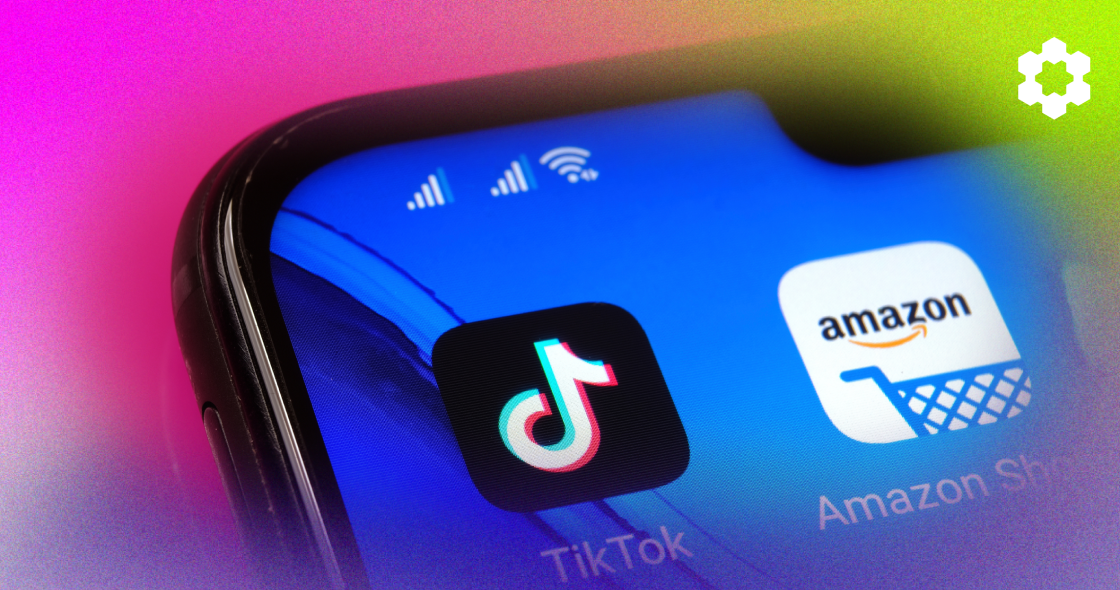If you’re any type of B2B or B2C business, you probably have competitors – and we’ve all heard that a little competition is healthy (and can even lead to positive innovation!) 💥.
What’s even healthier is staying ahead of your competitors 😉 especially with your Facebook Ads.
Since your competitors likely have the same profile of customers that you’d like to find, one solid targeting tactic for finding quality customer in your Facebook Ads is to reach people they’re already targeting or use similar strategies.
Below we’ll show you 4 tips to find your competitors’ Facebook Ad targeting, so you’ll have some fresh ideas and tactics for optimizing your own campaigns.
Tip 1: Look at competitors’ UTM tags in their ads
Tagging your ads and any links with UTM parameters is a foundational best practice for your marketing efforts, as it lets you monitor where your website visitors are coming from and properly attribute your conversions.
The 5 standard UTM parameters include:
- 🏠 utm_source: channel where the traffic starts from, such as “facebook”.
- 💥 utm_campaign: a name to identify the campaign.
- 📣 utm_medium: type of link used, such as “ads” or “paid” or even “cpc”.
- 📹 utm_content: often used for A/B testing, to track what was clicked on to refer the user to the URL, such as “15secvideo” vs. “1minvideo”.
- 🕵️♂️ utm_term: search keywords you’re targeting for paid search campaigns, such as “b2bmarketing”.
This tip requires a few pre-requisites to see competitors’ retargeting campaigns:
- Your competitor is running broad website retargeting campaigns (and/or you fit their target audience).
- Your competitor is tagging their ad links with UTM parameters.
💥 How to do it:
- Visit a number of competitors’ websites and click through some of their site content.
- Wait a few hours, then scroll through your Facebook News Feed to see if you get retargeted with any of their ads. Note: we test this often, and are frequently retargeted by many competitors and other company sites we visit.
If you’re having a hard time being retargeted with any competitors’ ads after visiting their sites, you can still get ads inspiration from other brands you follow.
For example, here’s an ad from Taboola, a large content discovery platform.
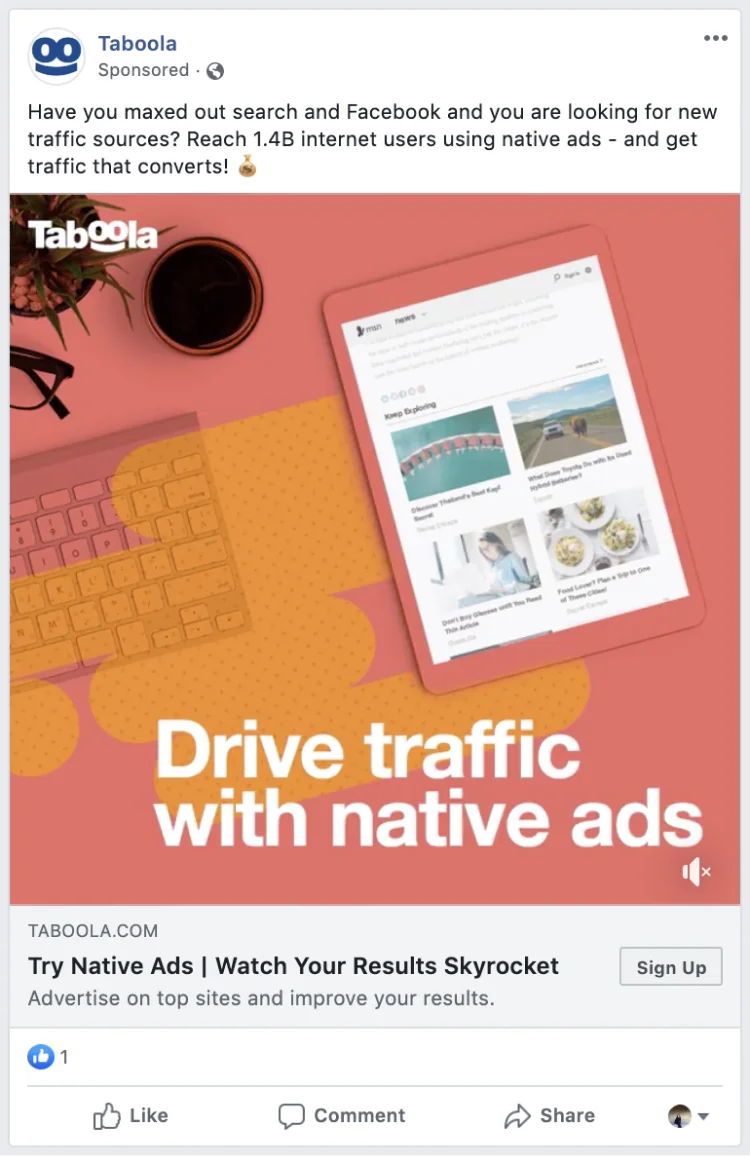
- When you see a competitor’s ad (or any great ad), click on the ad, and view the ad URL.
You can copy/paste the ad URL into a note, or scroll over to the end of the destination URL, to see if they’ve included any UTM parameters like Taboola is doing.

- If they’ve added UTM parameters to their ad URL, in many cases you’ll be able to get more details about the campaign. This can usually be pretty telling in terms of their targeting and type of ad they’re running.
For example, this is a copy/paste of Taboola’s entire ad URL that takes people to a custom landing page:
https://go.taboola.com/drive-traffic-seamlessly-fb-next/?utm_source=facebook&utm_medium=cpm&utm_campaign=mg_en_remarketing_conversions_desktop_custom_fb-high-pluslowrev-7-dynamic-19-07-ufc_bof&utm_term=mg_en_fb-an_nf-plus_desktop_non-converters_lead-custom-website-dynamic-19-07-na-in-ir-nl-es-ch-uk-il-au-br-pl-fr-de-fi-dk-is-mx-za-at-se&utm_content=mixed_fb-an_nf-plus_desktop_nx-tb-hp-fp_mixed_rec-sq-dynamic--19-07-bof&fbclid=IwAR10W4rDBbVD71Vq5gwNprsIm21m1aPtnfo6zz8bBZQxOrtzjpjirv7KxxM
As you can see, they use the following UTM tags:
- 🏠 utm_source = facebook
- 💥 utm_medium = cpm
- 📣 utm_campaign = mg_en_remarketing_conversions_desktop_custom_fb-high-pluslowrev-7-dynamic-19-07-ufc_bof
- 📹 utm_term = mg_en_fb-an_nf-plus_desktop_non-converters_lead-custom-website-dynamic-19-07-na-in-ir-nl-es-ch-uk-il-au-br-pl-fr-de-fi-dk-is-mx-za-at-se
- 🕵️♂️ utm_content = mixed_fb-an_nf-plus_desktop_nx-tb-hp-fp_mixed_rec-sq-dynamic–19-07-bof
🚀 A few key takeaways:
- Based on their Campaign, Medium, and Term: They’re running CPM-based remarketing campaigns, to people who haven’t converted, in around 20 global countries, and likely started the ad in July.
- They have remarketing campaigns specifically for desktop users. Pro-tip: create separate campaigns for different placements, so you can optimize your content and creative for mobile vs. desktop.
- Most companies will have their own UTM taxonomy, so it may take a bit of sleuthing to figure out what they’re doing 🤠. But as you can see, you’ll still get a great overall understanding of their ad targeting and setup.
Tip 2: Click on the ellipsis from an ad in News Feed
This is an easy way to view the targeting for any ads you see in the Facebook News Feed.
To see your competitors’ ad targeting, it’ll also require that your competitor is running broad website retargeting campaigns (and/or you fit their target audience).
💥 How to do it:
- To track your competitors’ retargeting campaigns, visit a number of competitors’ websites and click through some of their site content.
- Wait a few hours, then scroll through your Facebook News Feed to see if you get retargeted with any of their ads.
Note: if you aren’t seeing any competitors’ ads, you can still view how other businesses with compelling ads in your News Feed are targeting you.
- When you see a competitor’s ad (or ad from a business you follow) in the Facebook News Feed, click on the grey ellipsis 3 dots “…” in the upper-right corner. Note: this works on both mobile and desktop.
Here’s an example ad from WordStream, a leading online advertising optimization platform.
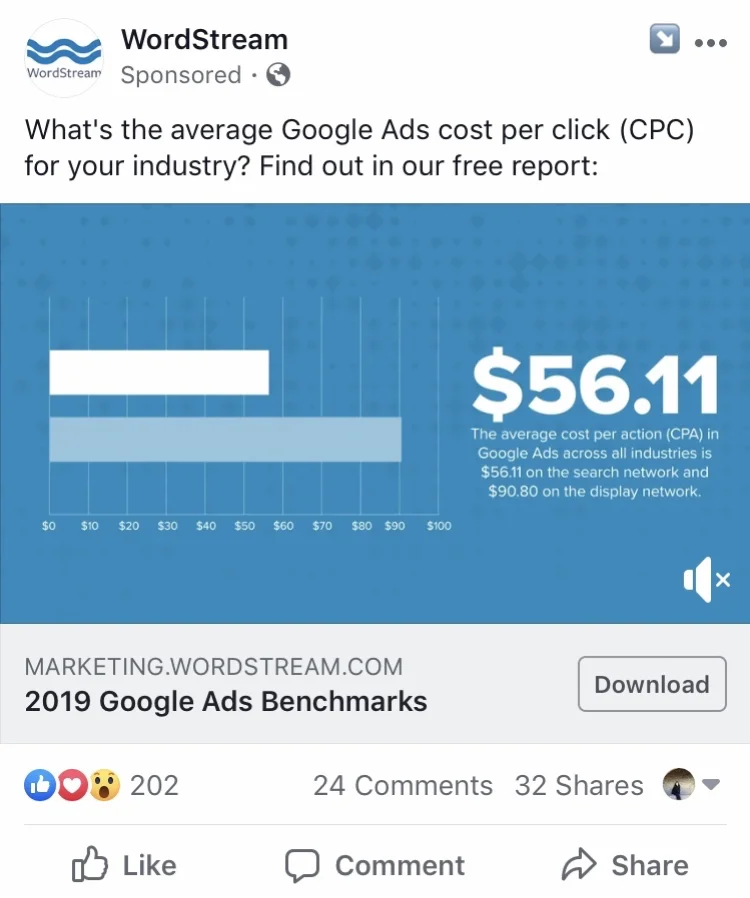
- Then, click on the option “Why am I seeing this ad?”
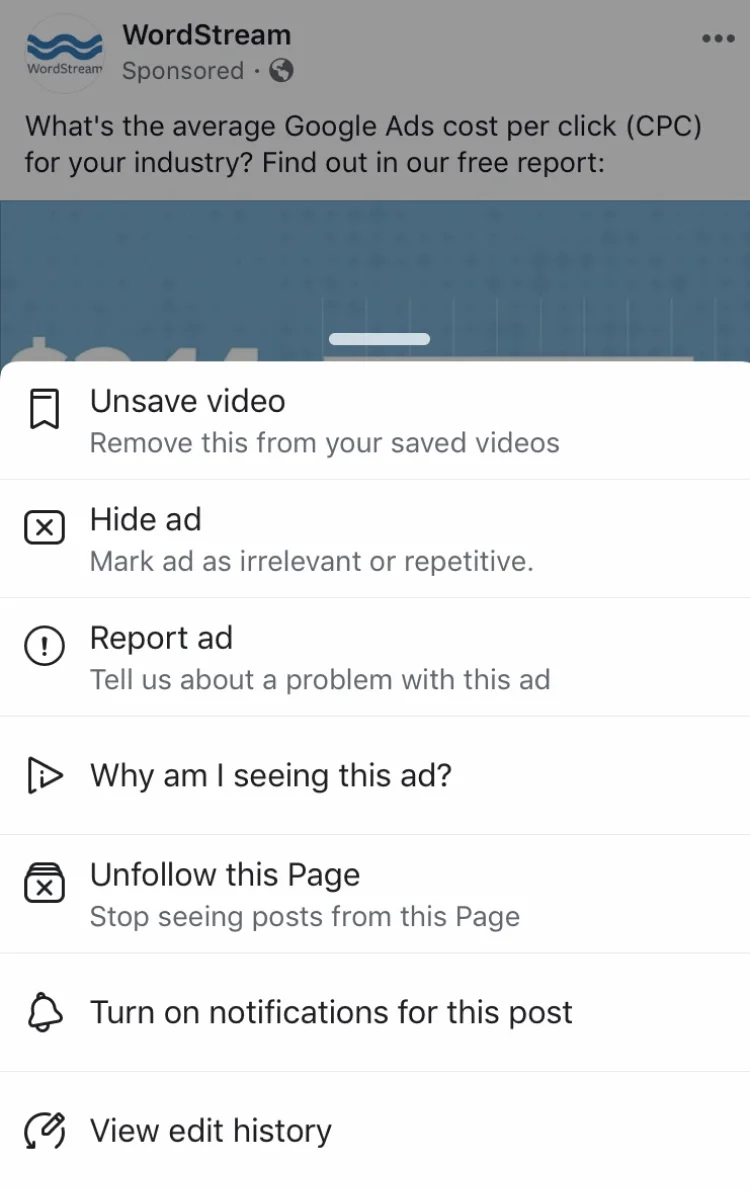
- And that’s it! You’ll then see some general details covering their target audience.
For example, Wordstream is showing their ad to people who visited their website or used one of their apps, as well as people who are 18 and older in the United States. So they’re doing typical website retargeting or retargeting their customer base in the US.
This is also an easy way to get ideas on strategies you can run with in your own Facebook Ads.
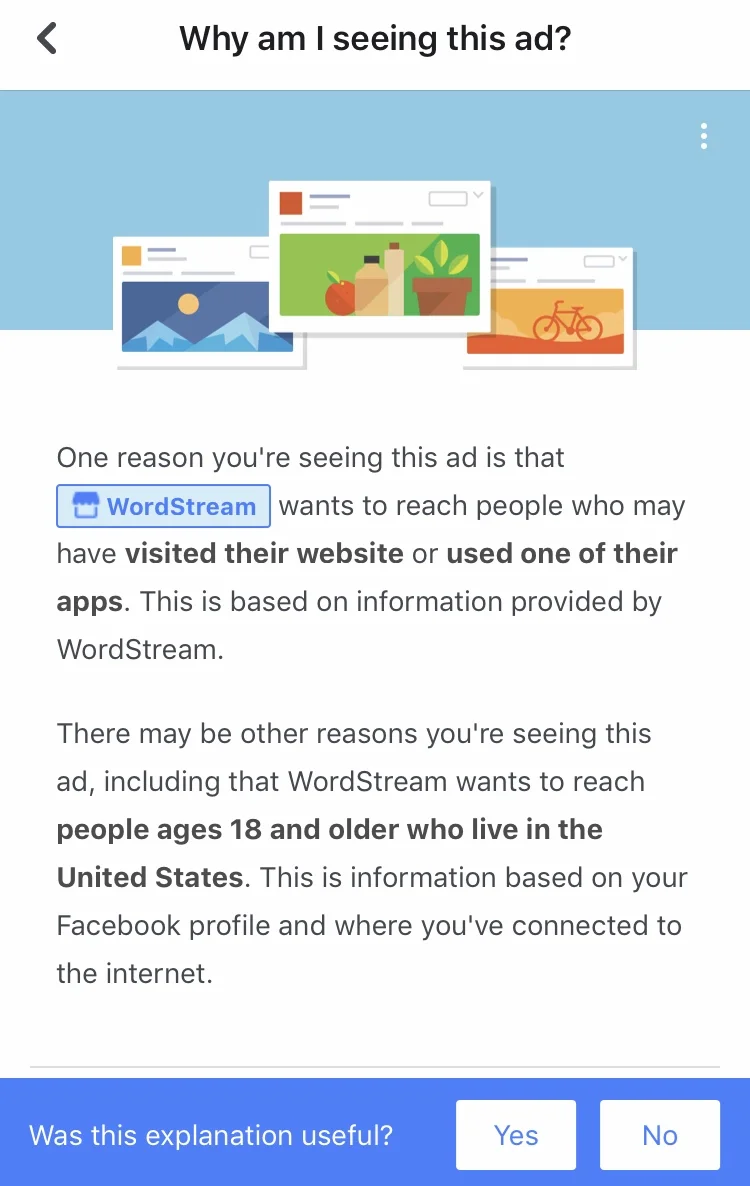
Tip 3: Use AdInboxMe to track competitors’ ads
Oftentimes, looking at your competitors’ ads content and creative is a great way to gauge the type of audience they’re targeting.
For example, ActiveCampaign, an email marketing platform promotes workshops they host and targets people who live in the same city (San Francisco), and even callout San Francisco in their ad content. They also include a promo code, to track people who register from their event.
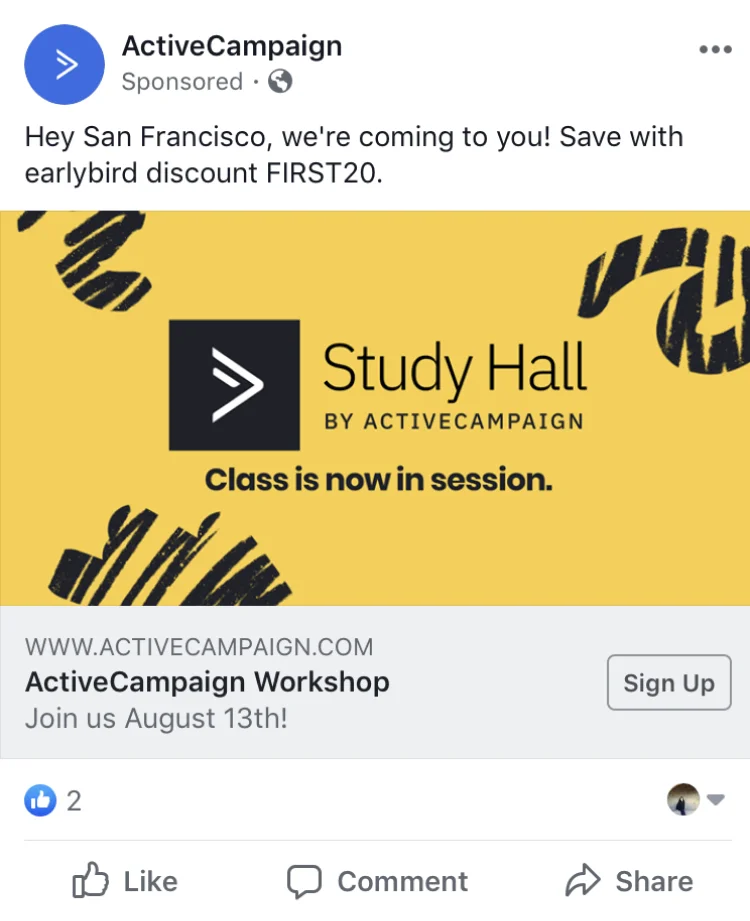
To track what your competitors are doing with their Facebook Ads and get notified about new ads they launch, you can use AdInboxMe.
💥How to get started:
Note: add yourself to the AdInboxMe waitlist and we’ll let you know as soon as you have access! 🙌 Once you’re in, you can follow the easy steps below.
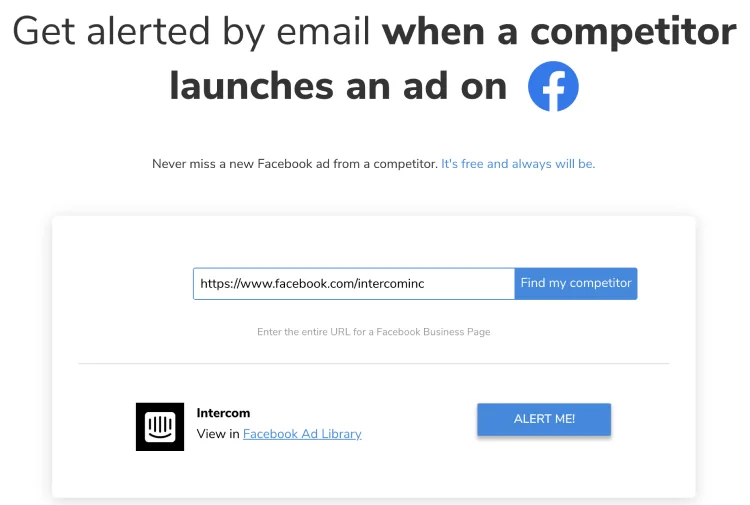
- Visit AdInbox.Me
- Enter any competitor’s entire Facebook Page URL. For example, Buffer is a social media management tool we love, and their Facebook Page URL is: https://www.facebook.com/bufferapp/
- Click on the “Alert Me” button that appears next to the business.
- Provide your name and email address and voilà! You’ll get email alerts each time that business launches a new ad on Facebook 🔥.
The email alert will look like the below whenever the company (Buffer, in this example) launches a new ad.
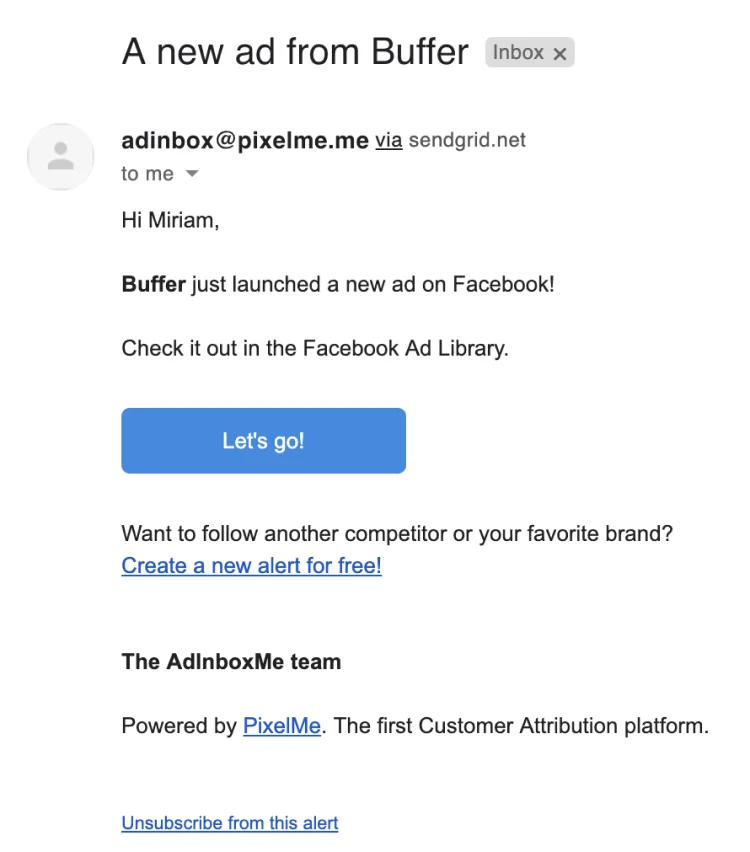
Based on your competitors’ creative formats and messaging, focus your ads on your unique differentiators, and develop ads that stand out against what your competitors are running.
Tip 4: See your competitors’ Facebook audience with Audience Insights
Facebook’s free Audience Insights tool offers a goldmine of aggregated insights about people connected to your own Facebook Page, as well as people on Facebook.
Since it’s hard to build a large Facebook Page following without ads, this is more of an indirect way to view people who’ve connected with your competitors’ Facebook Pages, of which a subset may have come from their ads.
You can use Audience Insights to your advantage by seeing the makeup of people who specifically like your competitors’ Facebook Pages 👍.
The tool shows you their demographics, other Pages they’ve liked, and more, and you can use the information to build out potentially new buyer personas you can tailor and target in your Facebook Ads.
💥 How to get started:
- Visit Audience Insights from Business Manager.
- Then, select “Everyone on Facebook”.
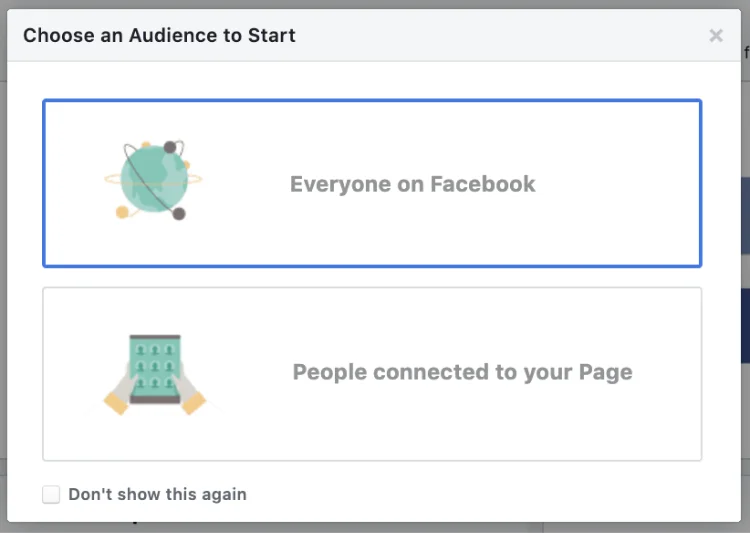
- Now you’re ready to create your audience. From the Interests section on the left, enter in the name of your competitors individually. Then, take a look at the aggregated insights across each tab, in particular: Demographics and Page Likes.
Below is an example when you enter in Mailchimp, the leading email marketing platform, as an interest. We’ve also filtered for people ages 18+, who are located in the United States.
From the Demographics tab, you’ll see that:
- Gender is split pretty evenly, between 51% women and 49% men.
- The top 3 Job Titles include Sales, Management, and Administrative Services.
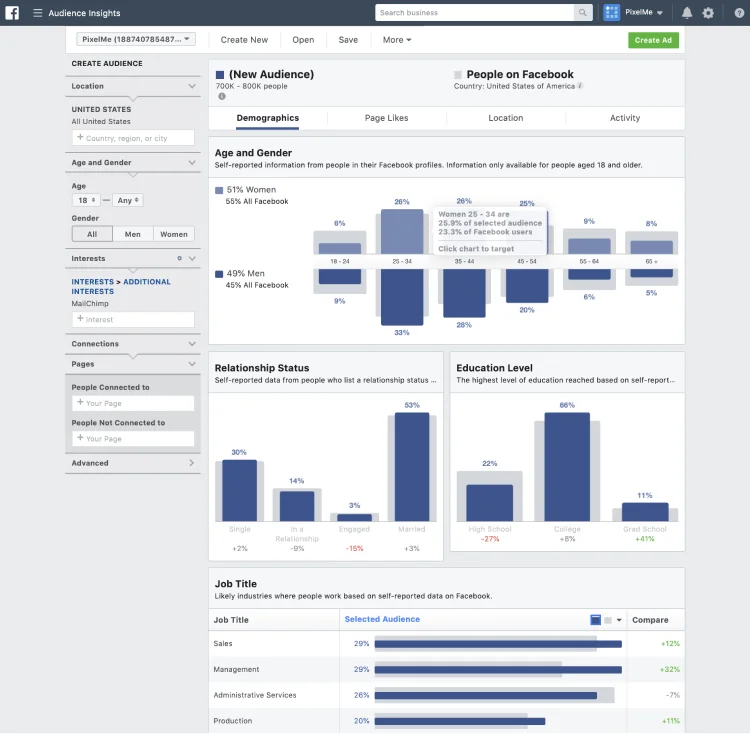
- To see Pages they’ve liked, toggle the Page Likes tab next to Demographics.
Here’s a snapshot of the Top Categories of Facebook Pages people who like Mailchimp have also liked, as well as specific Facebook Pages they like that are likely to be relevant to the audience you’ve filtered by.
If you’re doing interests-based ad targeting, this is where you can get crafty ideas based on the the types of interests your potential customers have. In the example above, the top 3 Pages liked (outside of Mailchimp) include HubSpot (CRM tool), Tim Feirriss (a well known entrepreneur), and Inc. Magazine (startup publication).
So people seem to have an affinity for tools, people, and services geared toward SMBs and are startup and tech-oriented. You can then create different types of customer profiles to see which ads convert best.
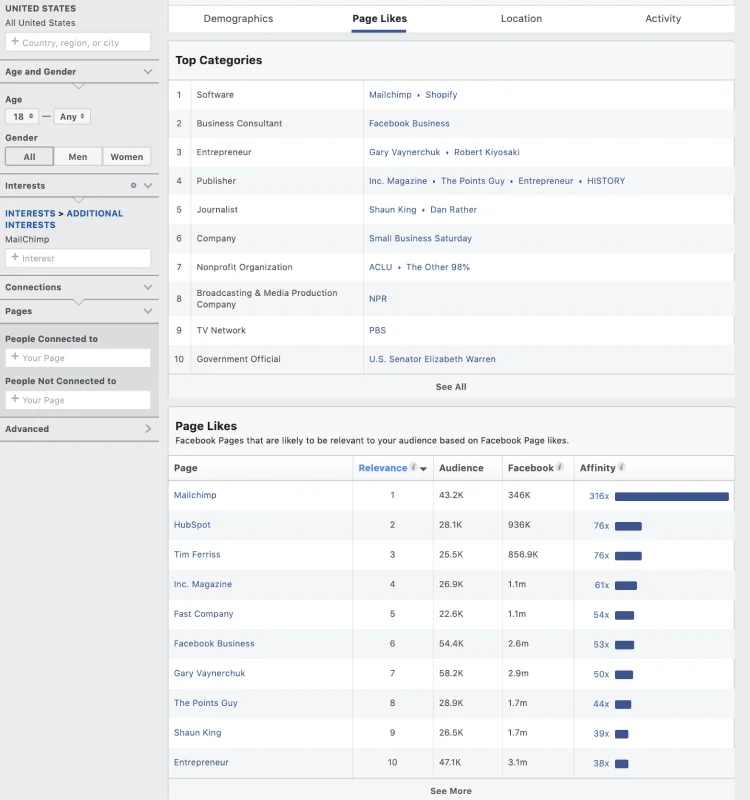
💪 Pro tips
- Not all Facebook Pages of your competitors will surface in the Interests section – it’s a good idea to target larger competitors and well known brands that are likely to have a much larger Facebook following.
- Try creating an audience using a variety of different interests in terms of services and tools that you know your customers use, to get a more accurate picture of how to target your ideal customers on Facebook.
Start optimizing your Facebook Ads targeting
Now that you have some tips for how to target people like your competitors are doing 🎯, remember to keep A/B testing different targeting techniques, creative, and messaging.
Finally, to see which ads drive the best results, you can easily measure your ROI across your Facebook Ads campaigns and other channels with tools like Smart Attribution 🎉.
Want to track your Facebook Ads ROI? Sign up for a free 7-day PixelMe trial 🚀. Or send us a message from the chat icon in the bottom-right corner! 💬
To get more unique advertising & marketing tips, subscribe to our Carbon6 newsletter






